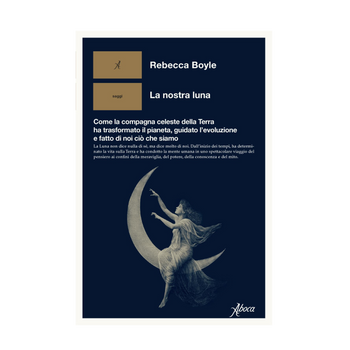You have no items in your shopping cart.
Brevi lezioni di meraviglia Brevi lezioni di meraviglia
Elogio della natura per genitori e figli Elogio della natura per genitori e figli
Rachel Carson Rachel Carson
€10,00
“Exploring nature with your child means rediscovering a sense of your surroundings. (…) Those who contemplate the beauty of the earth find reserves of strength that will endure as long as life lasts.”
“Exploring nature with your child means rediscovering a sense of your surroundings. (…) Those who contemplate the beauty of the earth find reserves of strength that will endure as long as life lasts.”
Availability:
In Stock
Sku: LIBBREVILE
ISBN/EAN: 9788855230674
Appearing first as an article in 1956 in the magazine “Woman’s Home Companion”, and later published by Harper in 1965, Brevi lezioni di meraviglia is a timeless gem – up until now unpublished in Italy – penned by Rachel Carson, the marine biologist and mother of the environmentalist movement, who in 1962, with Silent Spring, revealed the dangers of pesticides and fertilisers to the world.
In 1955, Carson began work on this short essay, considering it from the very beginning one of the most important projects of her life, a project which was unfortunately left unfinished. Brevi lezioni di meraviglia is the personal account of the trips she made in the companionship of her three-year-old nephew Roger, who was visiting her that summer at her cottage in Maine. Together, they wandered along the rocky coast, through thick woods and open fields, observing wildlife, plants, moonlight, storm clouds, and listening to the” live music “of insects in undergrowth.
In these pages, Carson captures the essence of a universe full of childlike wonder, reawakening in us that ancient desire for communion with the natural world. Recalling the way in which her own perception of the beauties of nature had been honed in the company of her mother during her childhood, Carson explains that a child needs at least one adult with whom to share this kind of experience, as long as the adult adopts the child's approach. Nature, after all, is an open arena of shared joy, and we all take the same pleasure in discovering it.
Rachel Carson (1907-1964) spent most of her professional life as a marine biologist for the U.S. Fish and Wildlife Service. She is the author of the international bestseller, Silent Spring (Feltrinelli, 1962).
Appearing first as an article in 1956 in the magazine “Woman’s Home Companion”, and later published by Harper in 1965, Brevi lezioni di meraviglia is a timeless gem – up until now unpublished in Italy – penned by Rachel Carson, the marine biologist and mother of the environmentalist movement, who in 1962, with Silent Spring, revealed the dangers of pesticides and fertilisers to the world.
In 1955, Carson began work on this short essay, considering it from the very beginning one of the most important projects of her life, a project which was unfortunately left unfinished. Brevi lezioni di meraviglia is the personal account of the trips she made in the companionship of her three-year-old nephew Roger, who was visiting her that summer at her cottage in Maine. Together, they wandered along the rocky coast, through thick woods and open fields, observing wildlife, plants, moonlight, storm clouds, and listening to the” live music “of insects in undergrowth.
In these pages, Carson captures the essence of a universe full of childlike wonder, reawakening in us that ancient desire for communion with the natural world. Recalling the way in which her own perception of the beauties of nature had been honed in the company of her mother during her childhood, Carson explains that a child needs at least one adult with whom to share this kind of experience, as long as the adult adopts the child's approach. Nature, after all, is an open arena of shared joy, and we all take the same pleasure in discovering it.
Rachel Carson (1907-1964) spent most of her professional life as a marine biologist for the U.S. Fish and Wildlife Service. She is the author of the international bestseller, Silent Spring (Feltrinelli, 1962).
Release date 2020
Dimensions cm 14 x 21,5
Pages 280
Release date 2020
Dimensions cm 14 x 21,5
Pages 280












